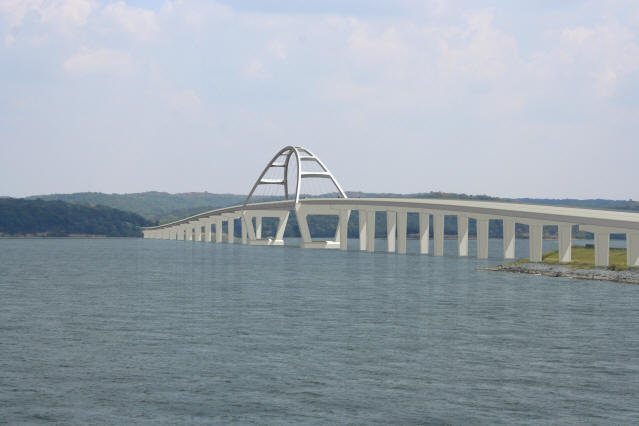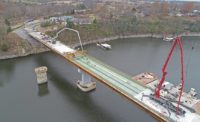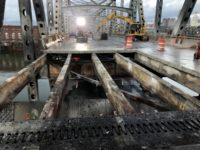

Kentucky officials are looking at speeding up construction of a four-lane bridge over the Tennessee River after a 322-ft span on the existing U.S. 68/KY 80 bridge collapsed following a cargo ship collision late on Jan. 26.
Divers were scheduled, depending on conditions, to start placing underwater sensors on Jan. 31 on the Eggners Ferry Bridge, a steel-truss structure, after indications that a pier near the impact area was not in position.
“We have to know for certain whether the pier has been shifted, and if so, whether it is still moving,” Mike Hancock, Kentucky transportation secretary, said in a statement on Jan. 28.
“We are trying to assess the condition of the bridge, whether it can sustain any sort of temporary repairs or other activity to get the location back in service,” he told a news conference earlier that day.
“We’re taking every conceivable method this morning to figure out how quickly we can accelerate the construction” of the planned replacement bridge, he added.
The Kentucky highway plan includes $165 million in construction funding for a new bridge. Preconstruction work, including geotechnical drilling, began a few months ago, according to officials.
The 312-ft Delta Mariner, owned and operated by Foss Maritime Co., Seattle, was hauling rocket parts from Decatur, Ala., to Port Canaveral, Fla., via the Tennessee, Ohio and Mississippi rivers to the Gulf of Mexico.
It is still at the site, with part of the collapsed steel across its prow.
One next step will be to find “the right kind of equipment to extract the bridge from the nose of the vessel,” Hancock said, suggesting a barge equipped with a crane.
Commercial traffic was allowed to resume in the area, the Coast Guard says, but recreational traffic remained banned.
There were questions as to whether navigational lights on the bridge were operating when the incident occurred, but that “should not have been a major issue,” Hancock said. “The channel is marked on all navigation charts."
A river pilot accompanied the 16-member crew, says Sam Sacco, Foss spokesman. They have made the run “frequently” over the past 10 years, he says.
The National Transportation Safety Board will lead the investigation started by the U.S. Coast Guard.
The structure was built in 1932 and raised in 1943 when Kentucky Lake was created. The average daily traffic was about 2,800 vehicles.



Post a comment to this article
Report Abusive Comment